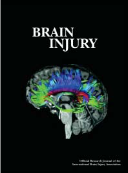Objective: To establish normative values for the King–Devick (K–D) test to be used as a reference for determining impairment related to concussion when individual baseline scores are lacking.
Method: Baseline K–D scores were collected for 243 participants aged 18–86.
Results: The mean age of subjects was 40.46; range 18–86 years. The mean time was 42.2 seconds; 26.19–75.96 seconds. There was a relationship (r = 0.376) between K–D score and age; scores increased (worsened) with age. There was also a relationship between score and education with scores decreasing as education increased (r = −0.194; p = 0.002). The K–D score was not influenced by sex or concussion history. A regression equation using education and age to predict K–D time explained 0.418 of the variance in K–D test time.
Conclusion: Although this research established a relationship between K–D score and age and education, the range in scores was too broad to establish normative values. In the absence of a baseline score, the use of a regression equation considering age and education level may provide some indication of expected score. However, the most reliable use of the test as a screen for impairment following concussion involves the use of a baseline test.
Summary Points:
- King-Devick test scores ranged from 26.19 to 75.96 seconds, for ages 18 to 86, with a mean of 42.2 seconds (standard deviation of 8.7 seconds), which is consistent with other published data.
- There was a weak relationship between K-D test scores and age (Pearson’s r = 0.376, p = 0.000). K-D test scores increased as age increased. This relationship was the most significant in persons of more than 50 years of age and progressed at a much steeper slope in subjects older than 70 years of age.
- There was a weak negative correlation between K-D test scores and education level (Pearson’s
r =0.194, p = 0.002). K-D test scores decreased (were faster) as education level increased.
- In agreement with other studies, the researchers concluded that any increase in post-injury K-D test score, when compared to an established baseline score, supports the diagnosis of concussion.
- Additionally, it is recommended that the newer, electronic version of the K-D test should be utilized for testing. All subsequent K-D tests should be measured in the same version as the baseline testing (i.e. an electronic K-D test should not be compared to an older version spiral-bound test).
- The study concluded that further normative values would be helpful in assessing test performance when a baseline measure is not available however the most reliable use of the test as a screen for impairment following concussion involves the use of a baseline test.

